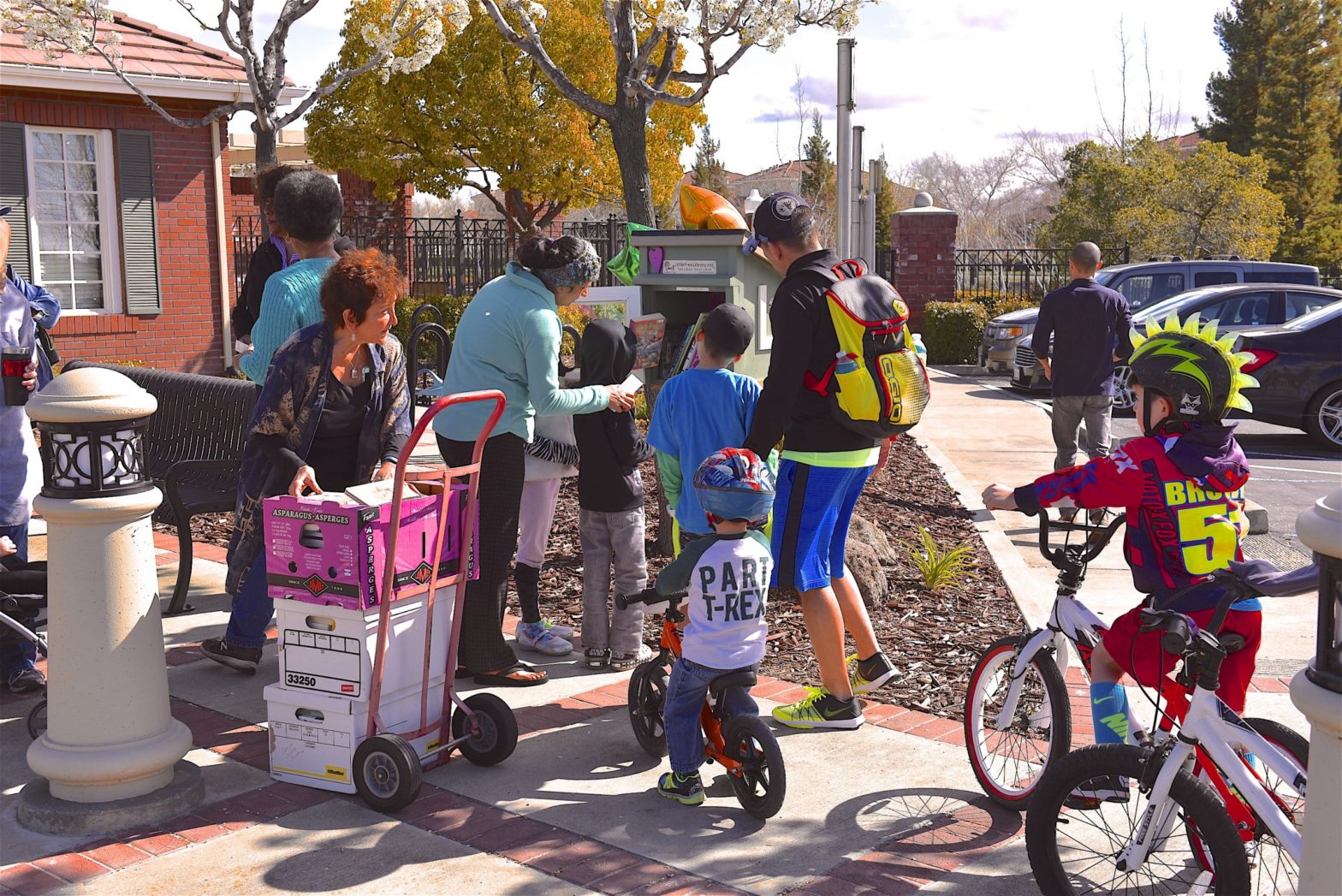There is no doubt one of the best and most beneficial aspects of Little Free Libraries (LFLs) is they enable people to read books more easily! They can help eliminate cost and transportation barriers that make reading inaccessible for many.
Unfortunately, little libraries often aren’t accessible enough to people with disabilities. They are a way of building community, so it’s vital everyone has equal access to the resources of their community and can participate. Everyone deserves to read and enjoy the comforts of a library.
Here are some tips on how to make your Little Free Library more accessible.
Consider The Location Of Your Library
Be aware of where you install your library. Libraries installed at steep inclines or uneven surfaces such as gravel and sand can make it difficult or dangerous for those using a wheelchair to access LFLs. If there is a path to your library, pave it. Avoid using gravel or other uneven surfaces.
Avoid placing decorative rock gardens around your library or under it, so those with low vision or those using wheelchairs and canes will not slip or fall. If you install your library near a curb, ask the city to cut the curb in front of your library to make it easier for those who cannot step over curbs to access your library. The best place to install your LFL is close to sidewalks or near curb cuts.
Consider The Height Of Your Library
Little libraries are commonly installed at a height too high for someone in a wheelchair to reach or see into. The standard seat-to-floor height for a wheelchair is 18 – 20″. Ensure your library is installed low enough for a child to reach the bottom shelf and someone in a wheelchair to see inside and reach the books.
Install Simple Latches On Your Library Door
Avoid using anything that may require tight grasping, pinching, or twisting of the wrist. Avoid hooks, eye latches, doorknobs, or any complicated latch that may be difficult for someone with limited hand strength or ability to use. Opt for a magnetic latch or other simple latches instead.
Make Any Signs, Instructions, or Labels Clear
If your library includes any text labeling, instructions, or signs, make they are clear and readable. Choose bigger fonts with lots of white spaces to assist those who are visually impaired. Place any signs, labels, or instructions at a height and location that is visible.
Stock Large Print And Braille Books
Stock large print books in your LFL. They are typically 16 point prints or larger, the size of most children’s picture books. Consider including Braille books (uncontracted and contracted) for both children and adults. Books that have tactile elements are also helpful for those who are visually impaired. Seedlings.org and aph.org both offer inexpensive large print and Braille children’s books for purchase.
If your library offers Braille books, promoting them is a good way of letting people with visual impairments know to visit your library. In addition, this is a great way to raise awareness of Braille or large print books to those who may not be familiar with them.
Stock Books Written By Those With Disabilities
Consider including books written by those in the disability community and books that feature people with disabilities in your little library. A list of recommended books can be found on Little Free Library’s Read in Color recommended reading list.
Ask Questions And Do Your Research
When installing your little library, keep in mind questions that can help make your library more accessible. Ask, can a wheelchair user or person of a shorter stature reach the library? Can someone with low vision access the library? Can someone with limited hand strength or dexterity easily open the door? Can the ground under the library be a tripping hazard or an access barrier for someone with a mobility disability? Asking these questions will help you make your library as accessible as possible.
There are many resources available online that can also provide additional information. If there is a specific access need in your community, consider tailoring your LFL to address that need.
The disability community is an active and participating member of every neighborhood. It’s crucial that LFLs that serve the community also keep those with disabilities in mind. Increased accessibility for individuals with disabilities is beneficial for everyone, especially children and the elderly, adding to the positive impact of your Little Free Library.
This article was written with the help of Tiffany D, Taryn G, and Rebekah Taussig, author of Sitting Pretty: The View from My Ordinary Resilient Disabled Body.

